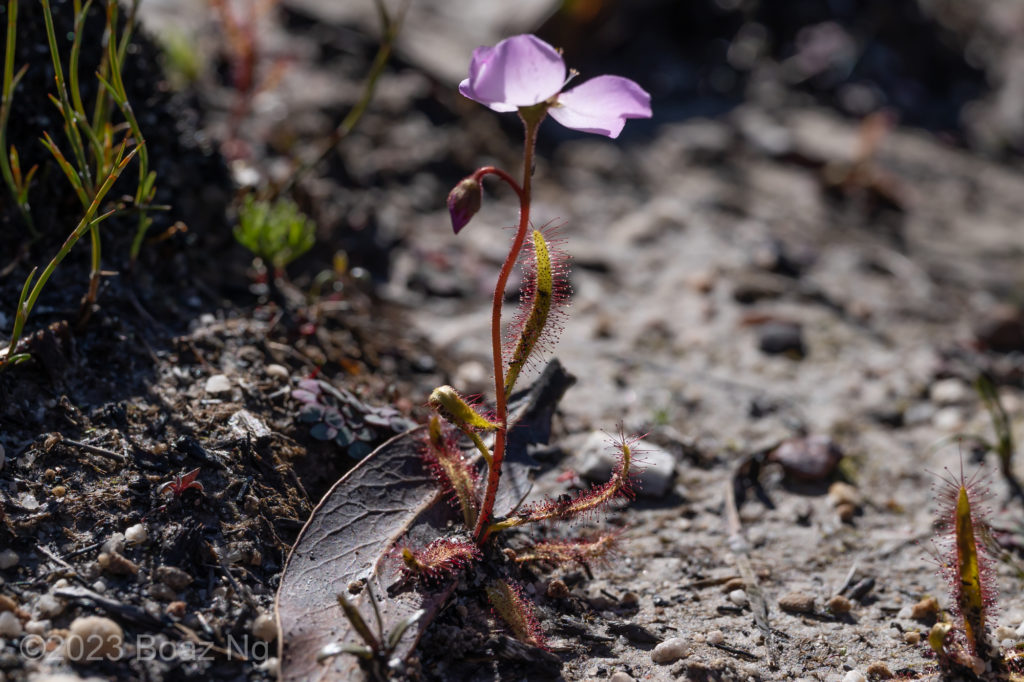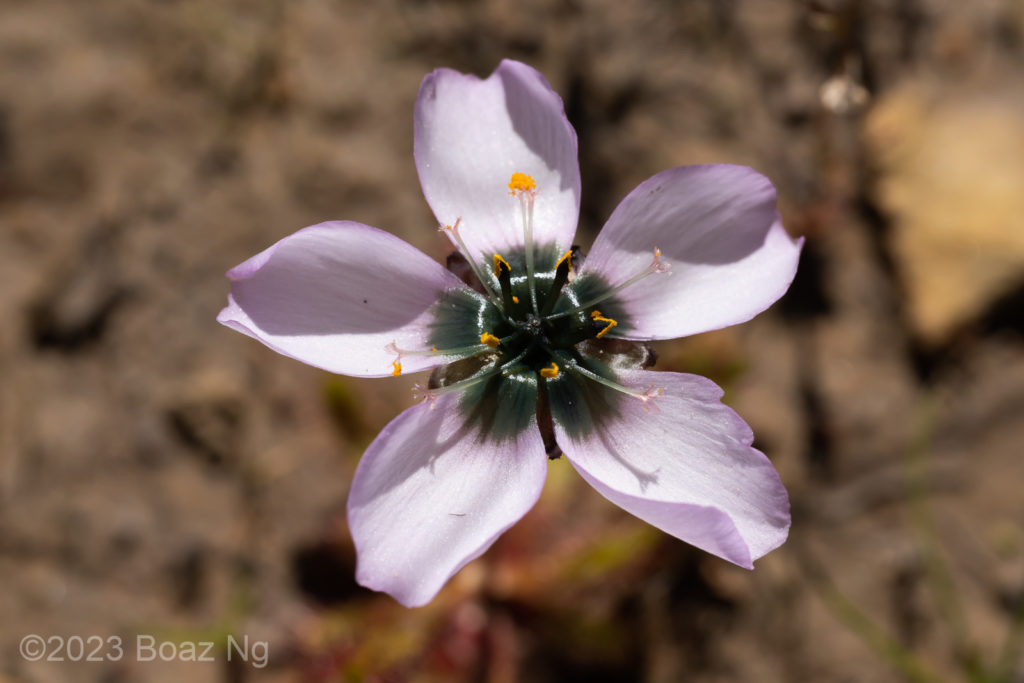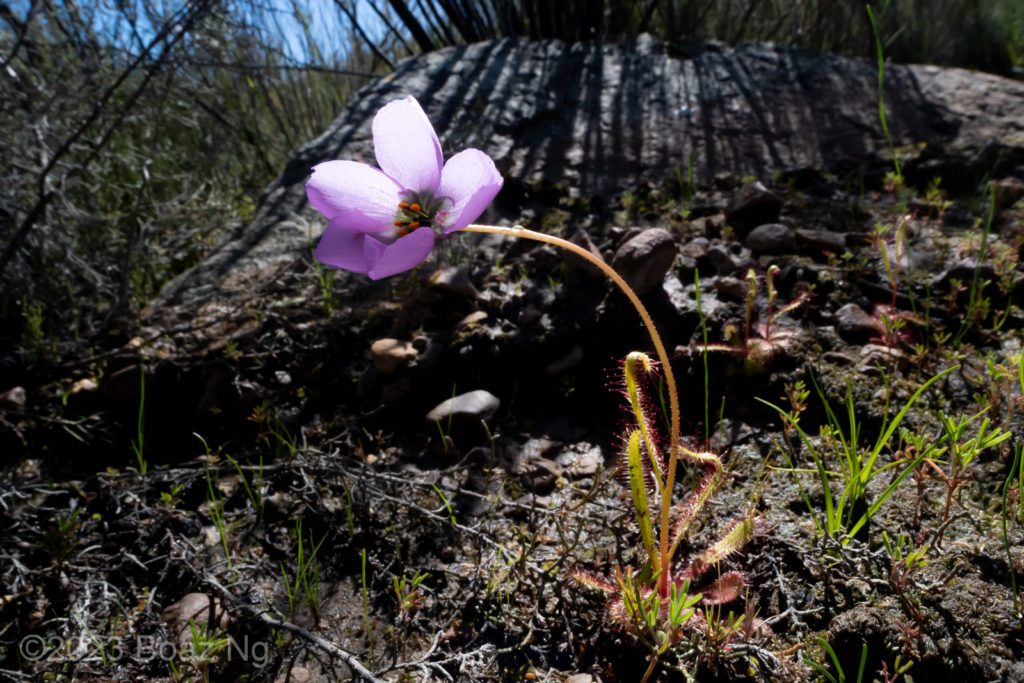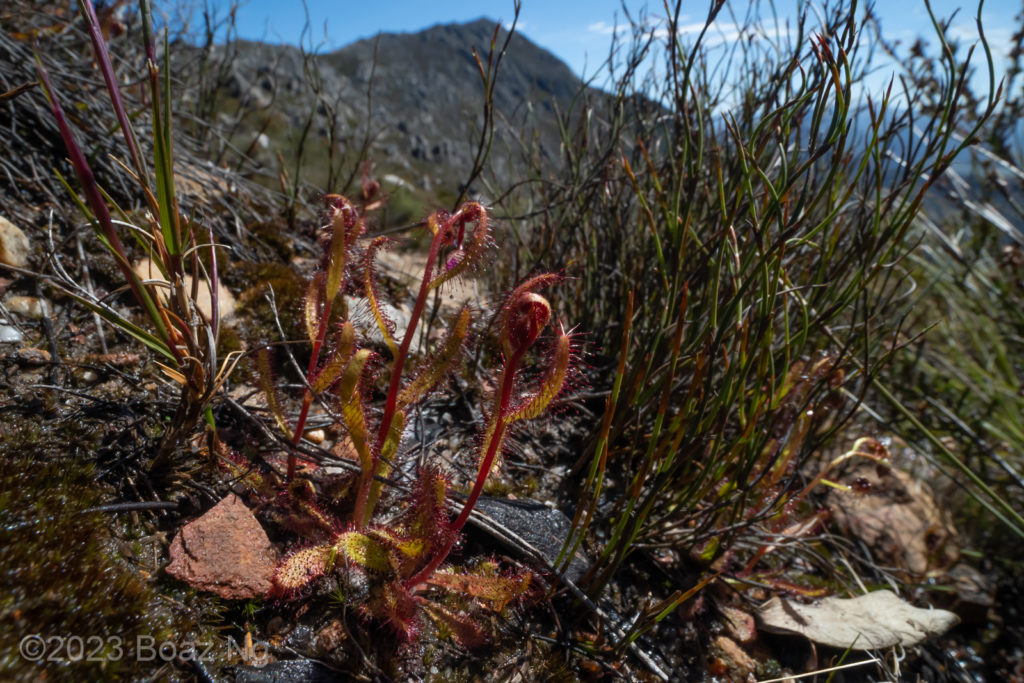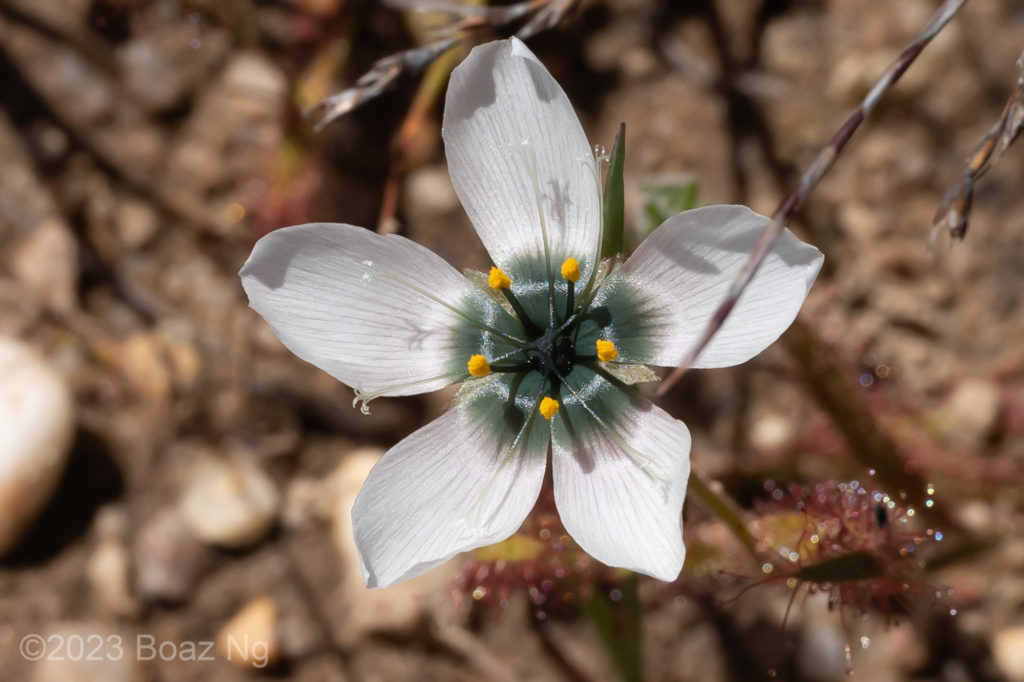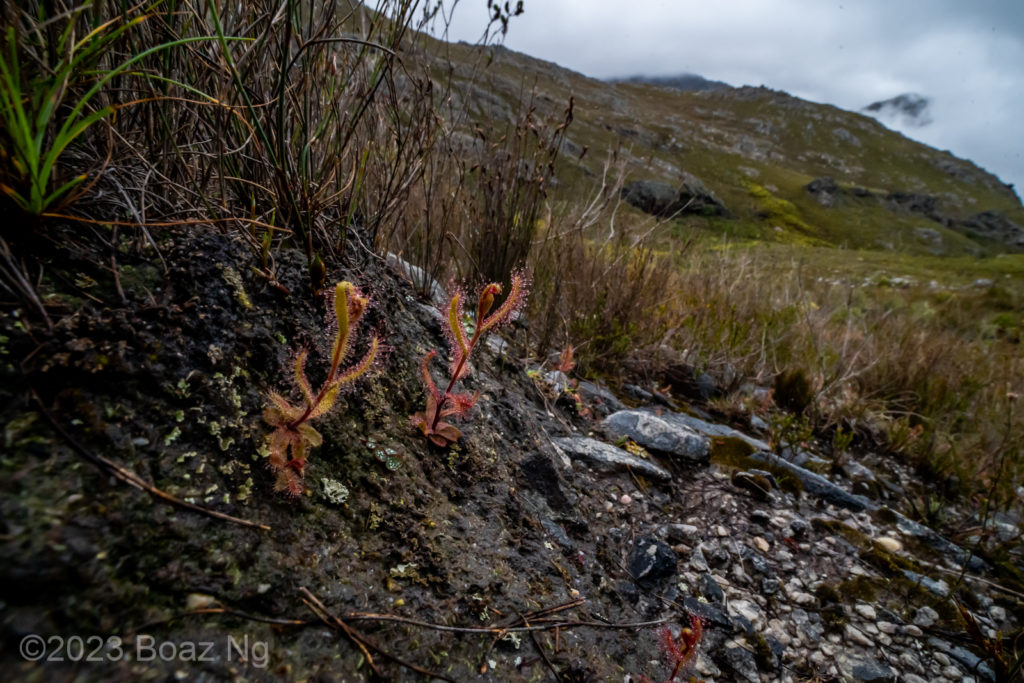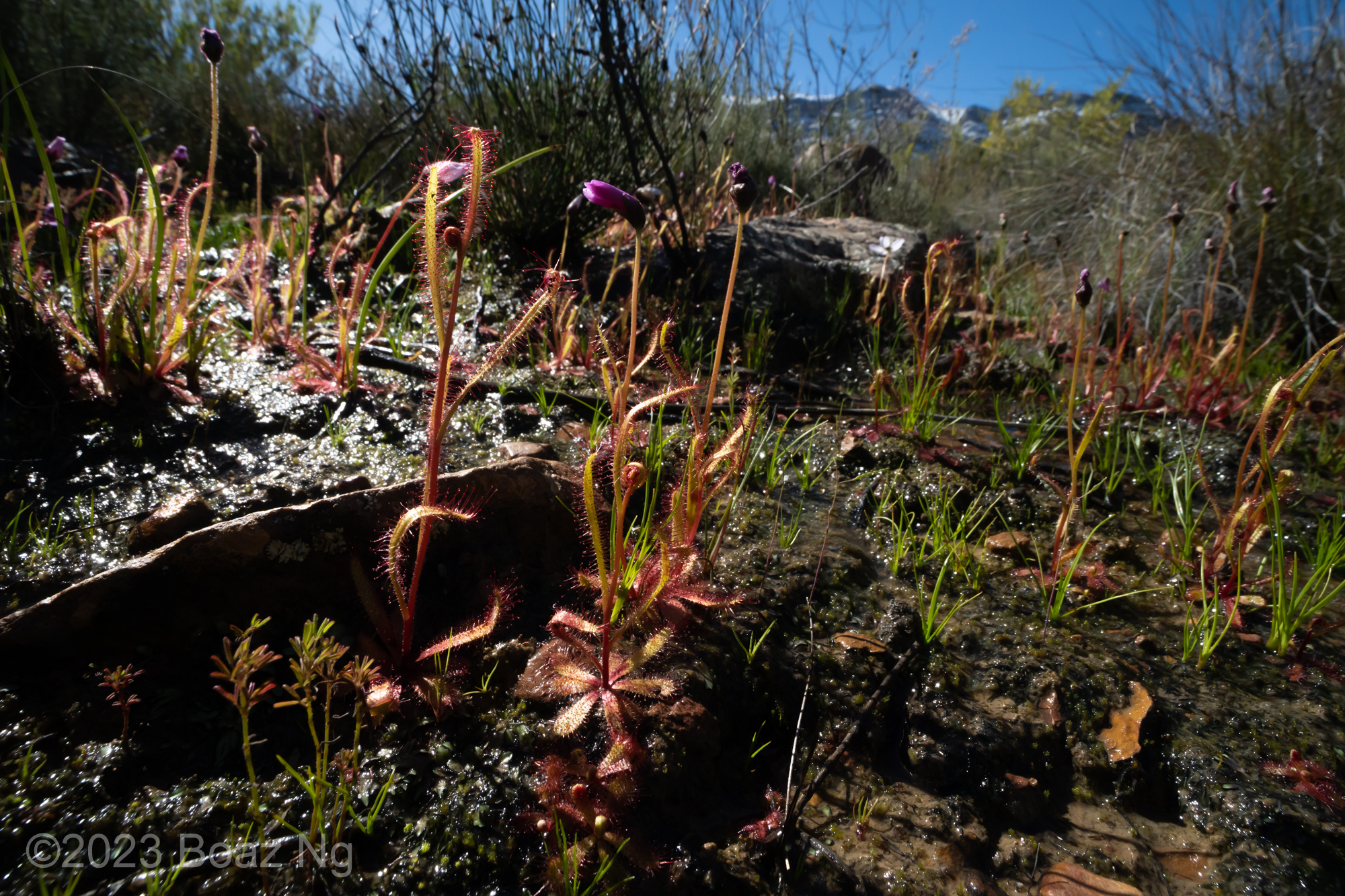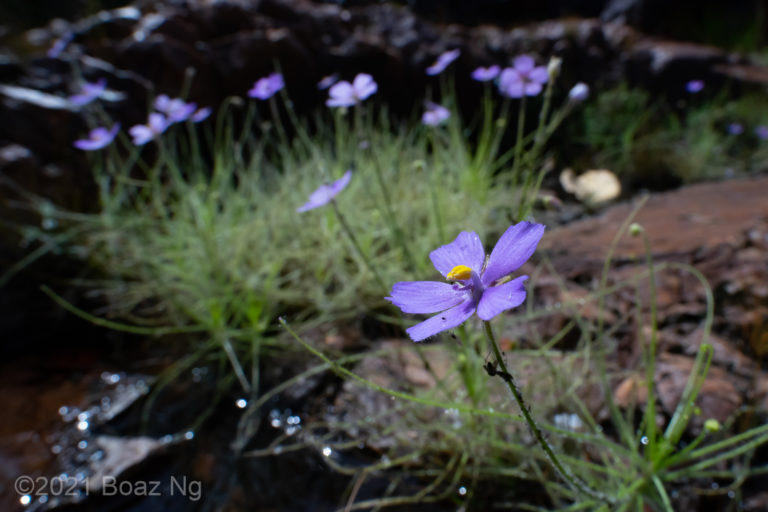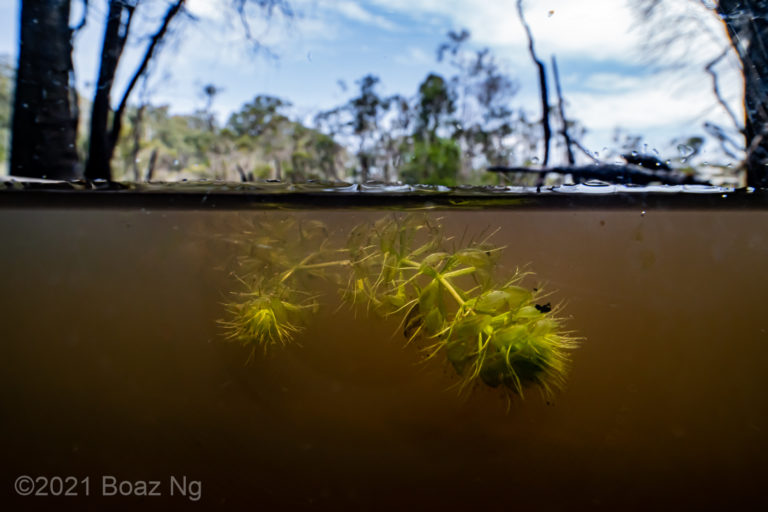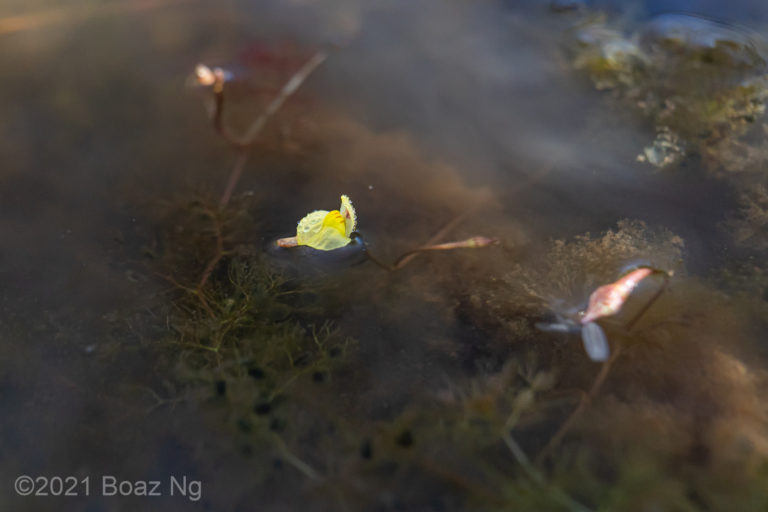Drosera variegata is a sundew in the cistiflora complex described by Debbert in 2002. The species is most likely named for the variety of leaf shape it produces.
Drosera variegata is a medium-sized sundew that produces an erect stem around 10-20 cm tall arising from a basal rosette. Three types of leaves are usually present. The rosette has both flat-lying leaves and semi-raised ones. A few long and thin leaves are produced on the stem. Like its close relatives, the flower is relatively large and usually coloured light pink or white with a dark centre. The petals are usually somewhat narrow, often with a space between the petals although fuller petalled forms do exist.
The species is mainly found in the mountains of the Western Cape, extending to the Bokkeveld Plateau in the Northern Cape, South Africa. It is usually found in clay-based substrates in flatter patches and seepages within the hills. The species is winter growing, flowering in the spring before dying back to the dormant roots in summer.
Drosera variegata is closely related to other plants within the D. cistiflora complex, sharing traits such as a large flower, basal rosette and erect stem. It is most similar to D. cistiflora. It can be difficult to distinguish the two taxa without cues in the field and an examination of several plants within a population. D. variegata tends to be shorter, with only two to four leaves on the erect stem (D. cistiflora tends to have more leaves on the erect stem). D. variegata tends to have narrower and spaced petals whereas those of D. cistiflora are usually fuller.
